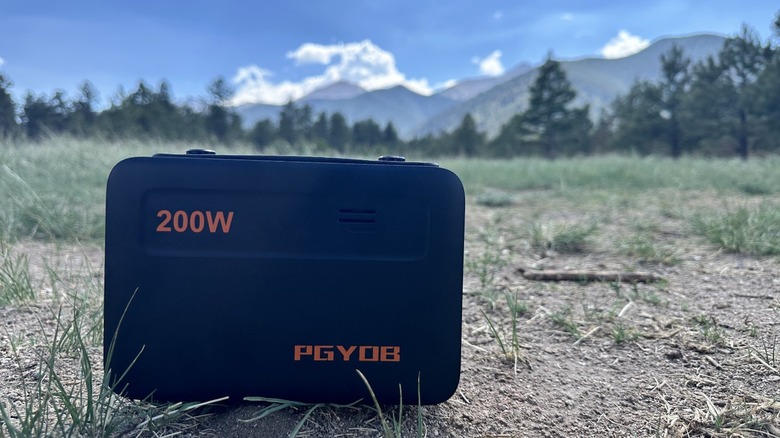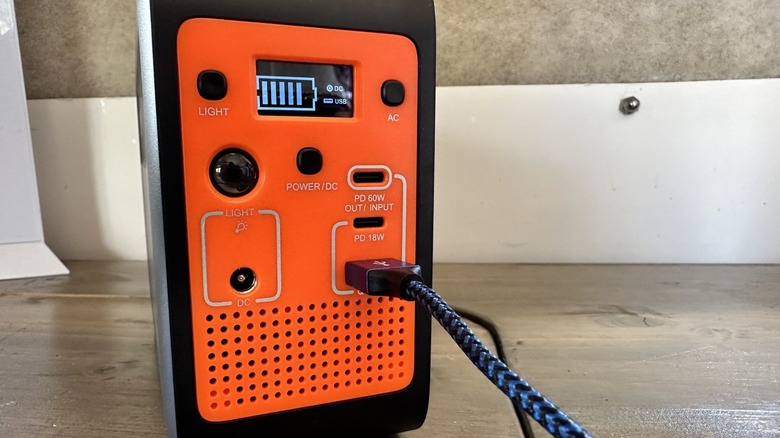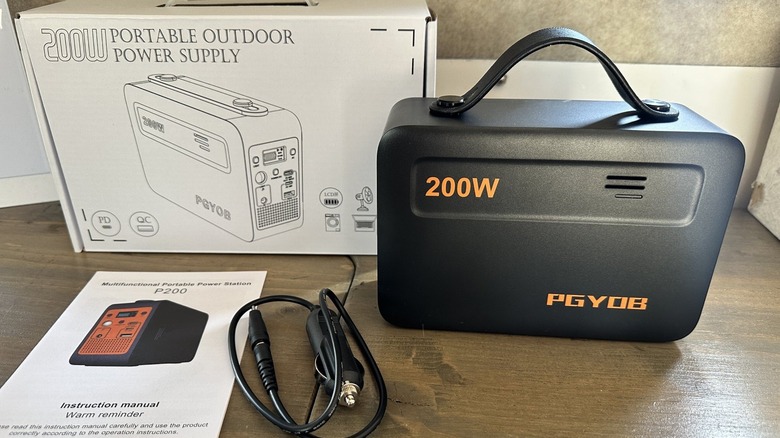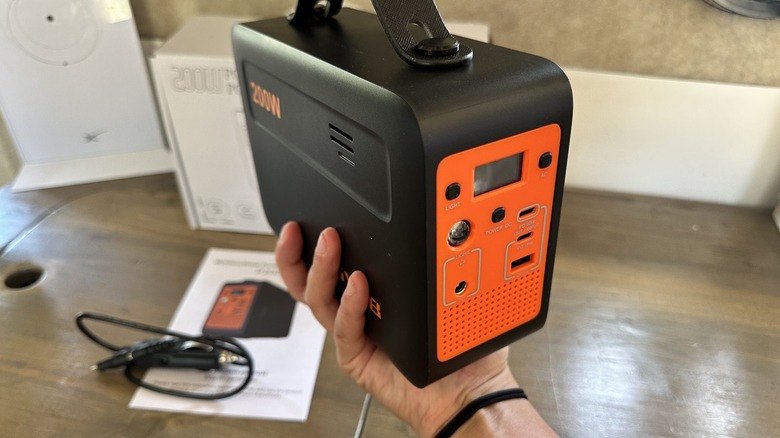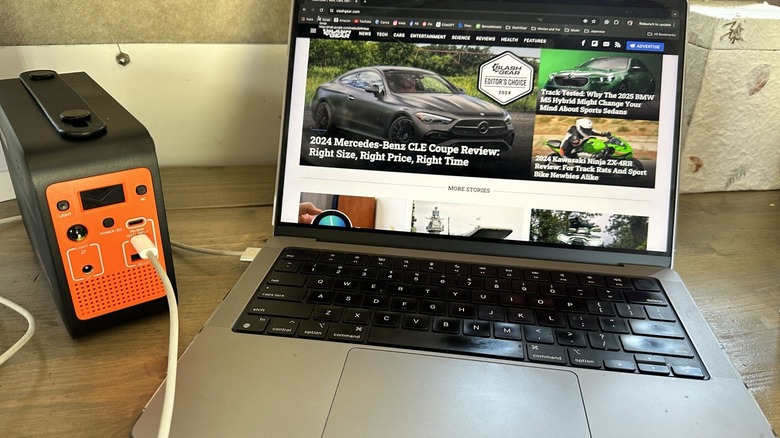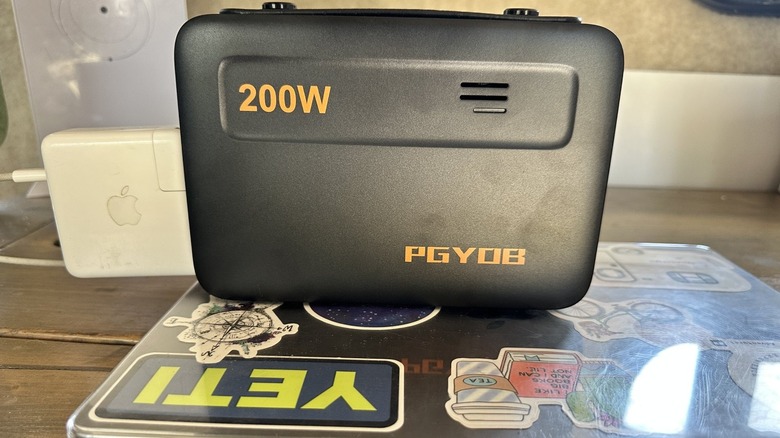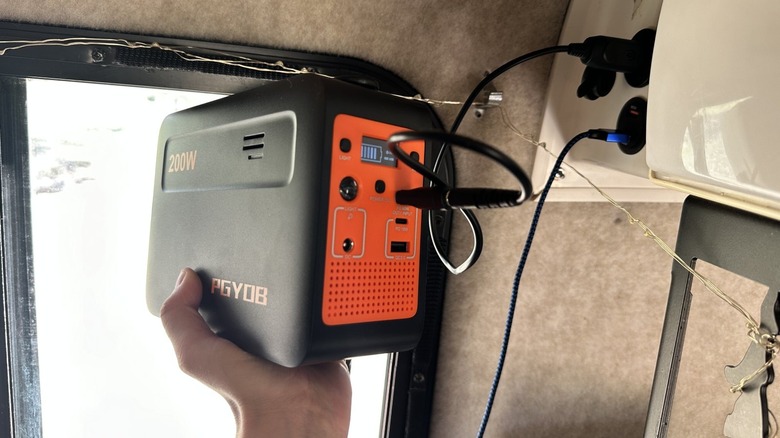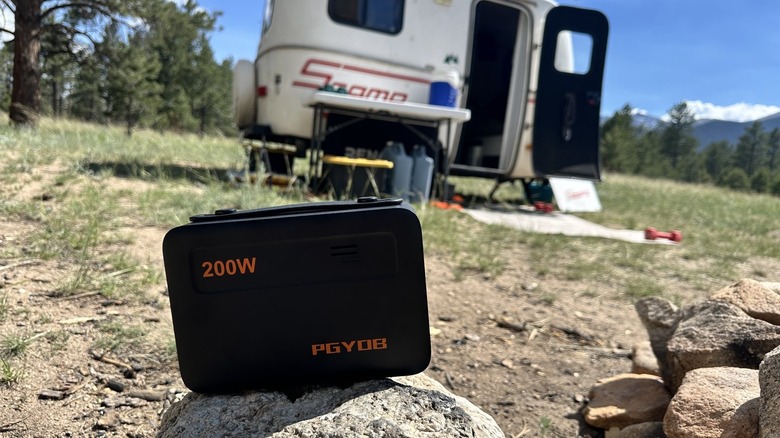Is This Cheap 200W Power Station From Amazon Any Good? We Put It To The Test
We may receive a commission on purchases made from links.
Being a full-time nomad living off-grid in my camper, I have a whole solar setup to keep Starlink, my fridge, and all my electronics charged and running. However, given the opportunity, I will always invite new power supplies to help alleviate my battery's load, especially on a cloudy day when solar is struggling to keep up.
Compared to many other power banks out there, the PGYOB 200W Power Station is relatively cheap — it only cost me $74.59 on Amazon due to a sale and another 10% off coupon on top of it — be aware that the sale and coupon may not be available at all times of the year. It also has a decent rating of 4.2 out of five stars from 329 people as of this article being written, but how well does it work, especially as an off-grid tech essential?
Important power information to understand
Before diving into all the features and whether or not this power bank is any good, it's important to understand the power information regarding the gadget. In the product description, it states that it is a 200W power station. This means that it has a continuous power output of 200W. However, it only has a 102.4Wh capacity. This means that if you connect a device that draws 200W of power, this power bank will only be able to supply power for about 30 minutes. If you connect a device that only draws 50W, you'll be able to get about two hours of power before the power station needs to be recharged.
Additionally, this power bank has a 400W peak allowance. Adding this into the equation means that if you plug something in that needs 400W to start running, like a motor or something equally powerful, the power bank can handle it as a quick burst. However, you'll need to make sure that the running watts on the device drop down to 200W or lower for continuous use. If not, it could cause damage to the power supply. Because of this, always check your device's power needs before plugging it into a power bank.
What does it come with
The contents of this product are fairly straightforward. The power station comes inside a well-built box with styrofoam, so you can safely store it when it's not being used. Additionally, there is an instruction manual explaining all the components of the power bank and how to use it. Lastly, the power bank comes with a DC (direct current) 12V car charger as well as a DC to PD (power delivery) adapter. This allows for four different ways to charge the power bank backup.
Features, quality, and portability
The design of this power bank is simple. The front has the brand name and little slits for when the AC (alternating current) fan is in use. On the right side, you'll find the monitor screen, a light, and your USB-A and USB-C outputs and a USB-C input for charging. Additionally, there is a DC barrel outlet. On top is a sturdy handle that flattens down.
Overall, it's a small and easy-to-transport power station. It only weighs three pounds and has the dimensions of 7.36"L x 2.7"W x 5"H. When holding it in my hands, it honestly feels very well-made. I won't have any worries about it falling apart on me during use or while transporting it.
There's a flashlight too!
A feature I was not expecting was the flashlight. Nowhere in the product description or on the manual does it tell me how many lumens the light is, but when I turned it on while it was dark in my camper, it was bright enough to actually want to use in the future. It's an LED light and comes in three different modes: strong, strobe, and SOS. When pointing it outside towards the woods, I'd say it shined approximately 50 with decent visibility. I wouldn't use it while trekking on a hiking trail at night, but while setting up for a fire at the campsite, it will work great.
How well does it charge
According to the product description, this portable power station can charge a phone ten or more times. I was able to test charging my iPhone while the power station's battery was around 75% charged — five out of six blocks were lit on the battery monitor. I charged the phone from 30% to 100%, which took two hours and eight minutes. The power bank's battery screen still showed five blocks lit. Because the gadget does not show the actual percentage, it's difficult to know how much power was actually used. However, based on that test, I could definitely get anywhere from eight to ten charges if my phone was completely dead.
When trying to charge my MacBook Pro, I plugged the USB-C into the PD 60W output. However, nothing happened. The instructions and even the labeling clearly state that it works as an output, but the MacBook wouldn't charge. I switched it to the PD 18W output only, and the laptop started to charge. It is a bit disappointing that I couldn't fast charge using the port when the instructions clearly state that I could charge a phone, tablet, or other electronic device with it.
What about switching to AC
When switched to AC power, this portable power bank is pure sine, which is a good feature for your more delicate electronics like a laptop. In fact, to keep your laptop safe, I would recommend switching it from DC to AC and plugging it into one of the Type A outlets on the back.
To switch from DC to AC is incredibly simple — all you have to do is press the AC button, and you'll hear a little noise like a fan turned on. However, I will say it is definitely a bit noisy. When I plugged my MacBook into the Type A outlet, it made a pretty unnerving whiny noise from the fan that just got faster. It charged my laptop just fine and didn't damage it (thankfully), but I also felt like the power bank was gearing up to launch into space.
Recharging the power bank
With the purchase, you'll receive a 12V car charger which has a barrel plug at the end. However, if I try to plug the barrel into the DC slot on the power bank, nothing happens. Turns out it is an output only, which is a bit inconvenient. I have to add the DC to PD adapter to the 12V plug, which gives it a USB-C ending to plug into the PD 60W output/input. It started charging from there. From approximately 75%, it took about 25 minutes to charge the power bank fully.
You are also given the option of using solar panels or a Type A plug to charge the power station. However, the plugs for either option are not included in the kit, and I couldn't find them for sale on PGYOB's Amazon storefront.
Final thoughts
Honestly, for the price, it works well enough. For my digital nomadic lifestyle, I'll definitely find use for it. I was a bit disappointed that I couldn't use the 60W output charging ability, and I can't say if that is a misprint from the manufacturer or a flaw in the power bank I received.
Additionally, due to how much I use my laptop and other electronic devices, I feel like I would need something a bit bigger in battery capacity like the Jackery Explorer 1000W. However, if you only need a backup power supply for a weekend camping trip, the PGYOB Power Station may be just the thing.
